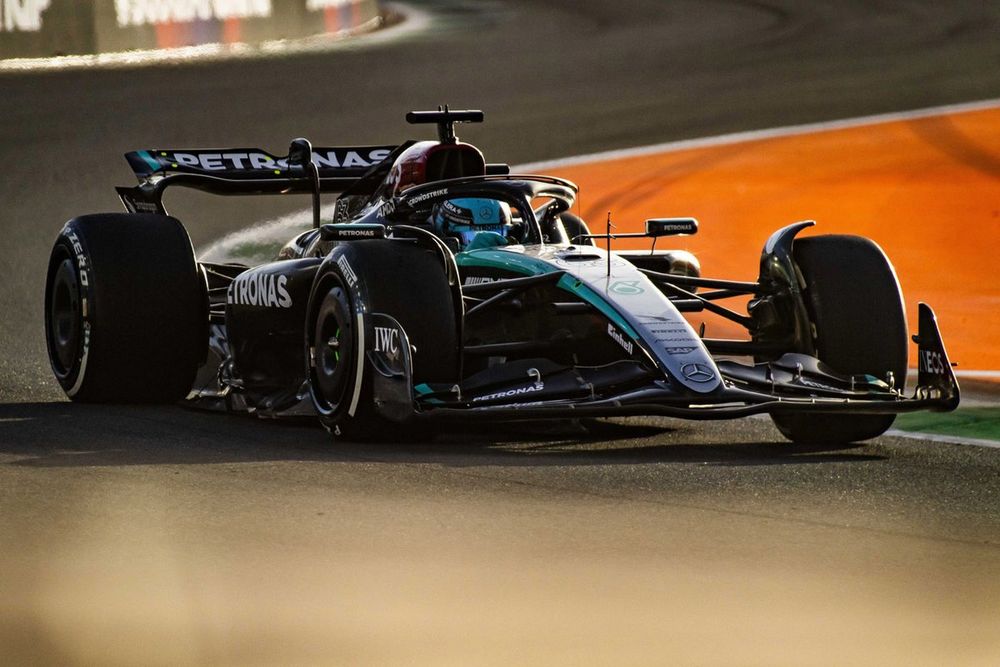Having hoped that its new W15 car would help it make the leap to get within striking distance of Red Bull, its recent struggles in Saudi Arabia have served as a wake-up call about how much more work still needs to be done.
But while the competitive picture did not look too good in Jeddah – as it found itself finishing behind McLaren and Aston Martin – the team feels that its true form is being disguised by one particular problem.
And that is a mysterious characteristic that makes the W15 not perform as it should in high-speed corners – where a combination of bouncing and loss of downforce plus grip are costing it a chunk of time to the opposition.
The team feels that this weakness is accounting for pretty much all of its deficit – as the car seems to be competitive in other areas of the track.
As Mercedes boss Toto Wolff said in Saudi Arabia: “We are quick everywhere else pretty much. We know that we have a smaller rear wing, we’re compensating what we’re losing through the corners. But it’s just at high speed where we’re losing all the lap time.”
Wolff’s remarks seem to be backed by real-world data, as GPS comparisons of the qualifying performance of Mercedes at the last two Saudi Arabian Grands Prix have exposed details of the issue it is facing.
Remarkably, despite the dramatic step forward that the team has been able to make between the W14 and W15, its 2024 challenger has shown itself to be actually slower in high-speed corners.
GPS overlays of the qualifying laps of 2023 and 2024 show that in the run from the high-speed Turn 4 apex through to Turn 8, the W15 car is notably lacking.
George Russell, Mercedes W15
Photo by: Shameem Fahath
Comparing Russell’s data (as he was the quickest Mercedes both years), it shows that while 12 months ago he was easily flat out through the majority of this section, this time around he was having to lift quite a bit.
The speed drop-off (costing him around 10km/h) meant that having gone into the Turn 4 complex pretty much neck and neck, Russell dropped around 0.130 seconds in this short sequence alone – a deficit that wasn’t recovered until just beyond the bottom hairpin bend halfway around the lap.
From then on until the start/finish line, the Mercedes was notably quicker than last year. It ended the lap more than half a second ahead – proving that performance in top speed and medium/low-speed corners is much improved.
Given how much lap time is being left…
Click Here to Read the Full Original Article at Motorsport.com – Formula 1 – Stories…

